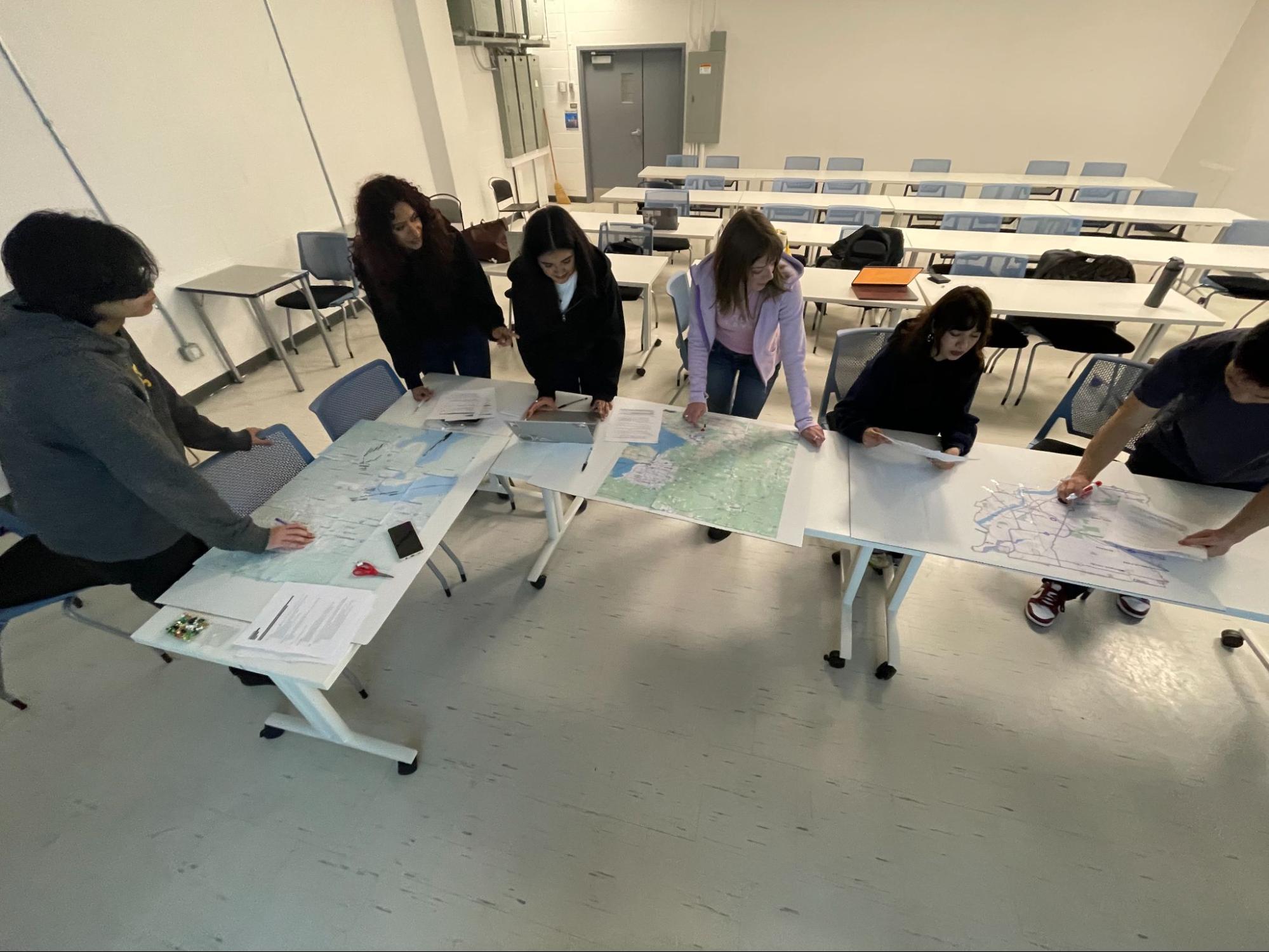Canadians from across the country share the stories passed down among their families in the late hours of the night
By Luis Ramirez-Liberato
As the sun sets and twilight envelops the Earth, a new world emerges. A world of ghosts, ghouls and all the creatures from the folklore of the various cultures found in Canada. Whether shared before the blaze of a campfire or recounted by a parent as you drift into slumber—where words come alive through imagination—the night is a time for stories to take shape.
The art of oral storytelling has come to impact the lives of many Canadians, with the night playing a significant role in their cultural tales. Common among a vast array of cultures is the importance of family in sustaining the life of these oral histories either by passing them down or adapting them between generations. Such is the case of Sharada Eswar, artistic director at Jumblies Theatre, who shares folktales with her daughter as her grandmother did back in Kerala, Southern India. Eswar shares memories of fighting with her cousins to cuddle up in bed with their grandmother as she narrated the folktales they would reenact the next day. Eswar’s grandmother, much like herself, was a storyteller. At temple festivals she would recount Indian epics like Ramayana and The Mahabharata. At the core of these storytelling practices is a moral centre, says Eswar, as she tells a favourite of her grandmother’s stories, The Monkey and The Crocodile from the Panchatantra. The story follows a monkey who befriends a crocodile by sharing his fruit. However, when the crocodile’s wife demands the monkey’s heart, the crocodile betrays him by offering to take him home for dinner and revealing his true intentions as they travel downriver. Using his wit, the monkey tricks the crocodile, telling him that he has stored his heart back in his tree allowing the monkey to escape when they return home and teaches readers to be wary of who they choose to befriend.
Mi’gmaq artist from Listuguj First Nations in Quebec and founder of Birch Bark Comics, Brandon Mitchell, recounts warnings from his mother about the trickster spirit Ableegumooch and how they would steal from his messy room lest he leaves it unclean. Ableegumooch, also known as the Lazy Rabbit, was a forest guide, once helping lost wayfarers find their path. As time went on, his services were no longer needed, causing him to become idle in life and turn into the trickster spirit he is, robbing and deceiving people and forest denizens.

Folktales as a mode of moral teaching can be found almost universally across cultures, from the Anansi the Spider tales of the Ashanti people in Ghana to Aesop’s Fables.
Former CBC radio host and writer Richardo Keens-Douglas describes his family’s tales as tools, ways of teaching the young about how to conduct their behaviour and the morals they should abide by, instilled unto them through fear.
“By six o’clock, you want to be inside the house because you don’t want the Ladjablès to come get you. This is such a character that if you’re caught outside, she would take you like a young child and bring you up to the mountains, and nobody would know and or see you again,” said Keens-Douglas. “So, as a young child, you were always told to be home by six o’clock, or else Ladjablès will get you. So these are the stories I grew up with. It’s about teaching you a lesson, teaching about good, about evil.”
Keens-Douglas hails from Grenada and tells of his own grandmother’s encounter with Ladjablès, the once enslaved woman who gave up her soul to the devil in return for eternal beauty. It was a dark and stormy night when an old woman knocked at his grandmother’s door to come inside, away from the elements. There, the old lady asked three times to hold her baby, but with her wits about her, she refused. After the third time asking, the old lady got up and disappeared into the night, only leaving a trail of footprints behind her. One human and the other like the cloven hoof of a cow.
Keens-Douglas explains that despite the horror contained in many of these family tales, their aim was to reinforce a sense of comfort between the family.
“I always remembered that if somebody else was telling a scary story, I’d be sitting close to my mother. And I think that by passing on the oral tradition, it’s the connection of love that connects you with the family, the tone of the voice that connects you with your dad or your sibling. It’s not a voice that you don’t know. It’s a warm voice. It’s a voice that you grew up with. It’s a voice that you will always remember. So when I tell stories, it’s like I’m hearing my dad tell it, or my aunt. So that’s the kind of thing that I loved about coming together and telling the story like when I heard my elders tell it,” said Keens-Douglas.
Beyond these folktales’ moral and familial teachings are their contributions to our dreams.
“The nature of [certain] stories was such that it centred around warding off bad dreams and how the gods would fight all the demons,” said Eswar. “And it would always end with a small prayer to this God called Hanuman, who was a general of Prince Rama. Hanuman was half monkey, half human, and he was extremely brave. And so the prayer would always be an invocation to this God called Hanuman so that he could protect us from any bad dreams that we may have.”
In the world of dreams, the folktales told before the hour of sleep take on a new life. Mitchell shares the sense of wonder passed onto him through the stories he heard before sleep.
“Why do we read at night? Why do we tell stories at night? Those are the last things that sit with us before we go to sleep. And those can impact your dreams,” says Mitchell. “When I was being read stories, I was making my mind so active and I was creating these visuals in my head.”
Mitchell describes how the folklore told to him by his mother changed the world around him. The lines running down the valleys and mountains became the trails left behind by Ableegumooch tobogganing down the slope.
While tales of terror can work to shape our ephemeral worlds, the fears of our physical world can also take shape in the stories of our families. Mitchell retells one such family story he has had the opportunity to reflect on with age. His parents, playing cards late into the hours of the night, heard a knock at the door. Mitchell’s father was met by a tall man in a trench coat and hat and draped in darkness in such a way that hid his face. But beneath the man’s coat, he could see a pair of hooves. Neither man exchanged a word, and from then on, they stopped playing cards so late after their visit from “the devil.” Mitchell describes this story with a background on the state of reserves at the time and the “Indian Agents” sent to monitor their communities and enforce curfews. In retrospect, Mitchell interprets this demonic visit as a way of his parents processing the agents watching over their community.
These midnight myths and folktales are more than just stories—they are a living connection to our histories, cultures and families. Whether through their moral teachings, spiritual ties or their way of explaining the mysteries of the physical world, they are carried through generations by the familiar voices of loved ones. In sharing these tales, families pass down wisdom and create bonds of comfort and love, ensuring that these stories endure, shaping our dreams and realities.





Leave a Reply